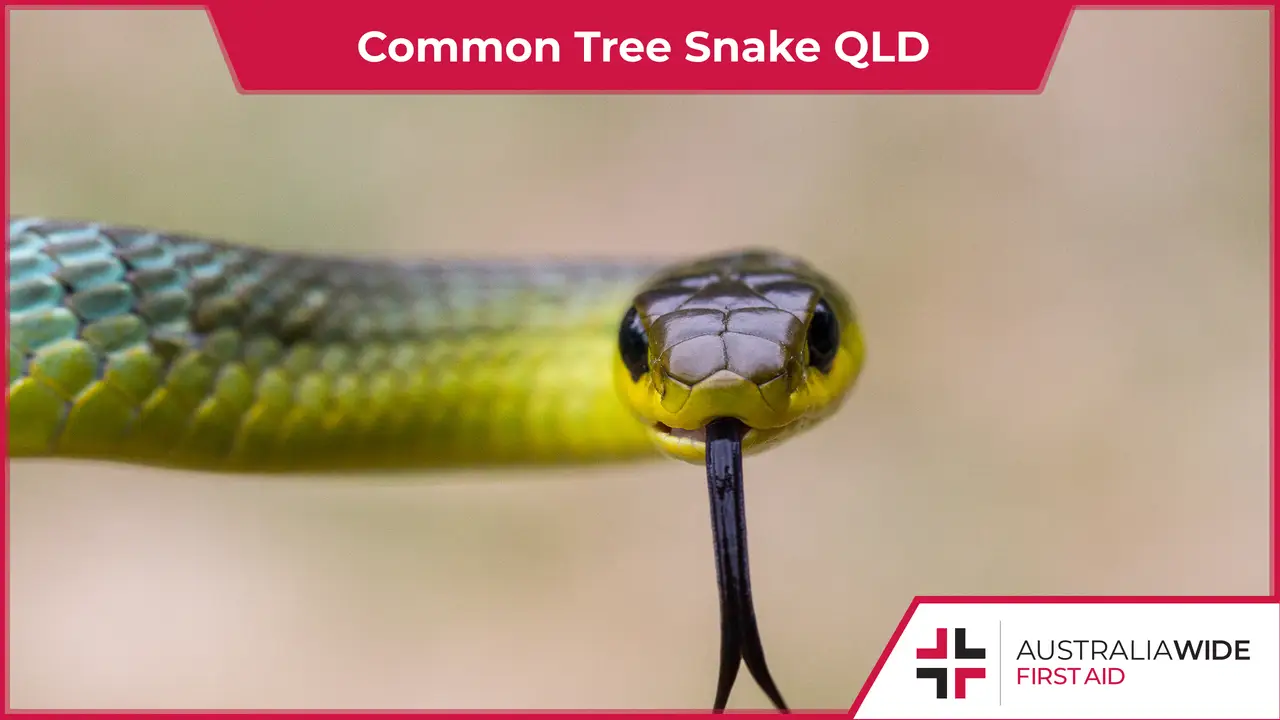Common Tree Snake QLD


The Common tree snake is one of the most regularly encountered snakes in Brisbane and along the coastline of south east Queensland (QLD).
They are also one of the most common snake species to enter homes.
Continue reading for more information about QLD's Common tree snake, and what to do if you encounter one.
We also cover snake bites in our general and child care first aid courses - we have training locations in Brisbane and in every other state, capital city, and major town throughout Australia. Head to our website to enrol in a course near you today.
QLD's Common tree snake has the following characteristics:
Of note, after the Common tree snake consumes a meal larger than its body diameter, the skin between their scales spreads and shows as a light sky blue.
QLD's Common tree snake is one of the most common species in Brisbane, where it can be found in the following habitats:
They can also be found in suburban backyards and gardens throughout the region, where they like to shelter in heavy foliage and exposed beams.
QLD's Common tree snake is non-venomous, inoffensive, and only bites infrequently, though they do use a foul smell musk to deter any potential threats.
It can be difficult to positively identify different snake species, as individuals of the same species can vary dramatically in colour, pattern, and size. As such, all snake bites should be treated as a medical emergency.
If you or someone else is bitten by a snake, call Triple Zero (000) for emergency services and apply a pressure bandage as part of the Pressure Immobilisation Technique. It is important to remember that snake bites rarely cause fatalities, as modern anti venoms are typically effective at neutralising most snake bites.
Likewise, snakes will never go out of their way to attack you - they will generally only bite people when threatened or provoked. As such, if you encounter a snake, do not attempt to approach, capture, or kill it. If you need a snake relocated from your home, contact a snake catcher instead.
To learn more about treating and preventing snake bites, enrol in one of our general or childcare first aid courses - we have training locations in Brisbane and in every other state, capital city, and major town throughout Australia. Head to our website to find a course near you today!

March 11, 2025
Darwin, the tropical capital of Australia’s Northern Territory, is home to a rich diversity of wildlife - including an impressive array of spiders. From the sprawling webs of golden orb-weavers to the cryptic camouflage of trapdoor spiders, these arachnids play a vital role in the local ecosystem. While some may inspire fear, the majority are harmless and even beneficial, helping to control insect populations.

September 4, 2024
Cat bites, while often underestimated, can lead to serious health complications if not treated promptly and properly. Cats' mouths harbour a variety of bacteria that can cause infections in humans.

April 1, 2024
Encounters with wildlife can often be thrilling, but when it comes to the creature known as the drop bear, the experience can quickly turn dangerous. A sharp increase in recent attacks prompts the need for understanding proper first aid procedures in case of an attack.